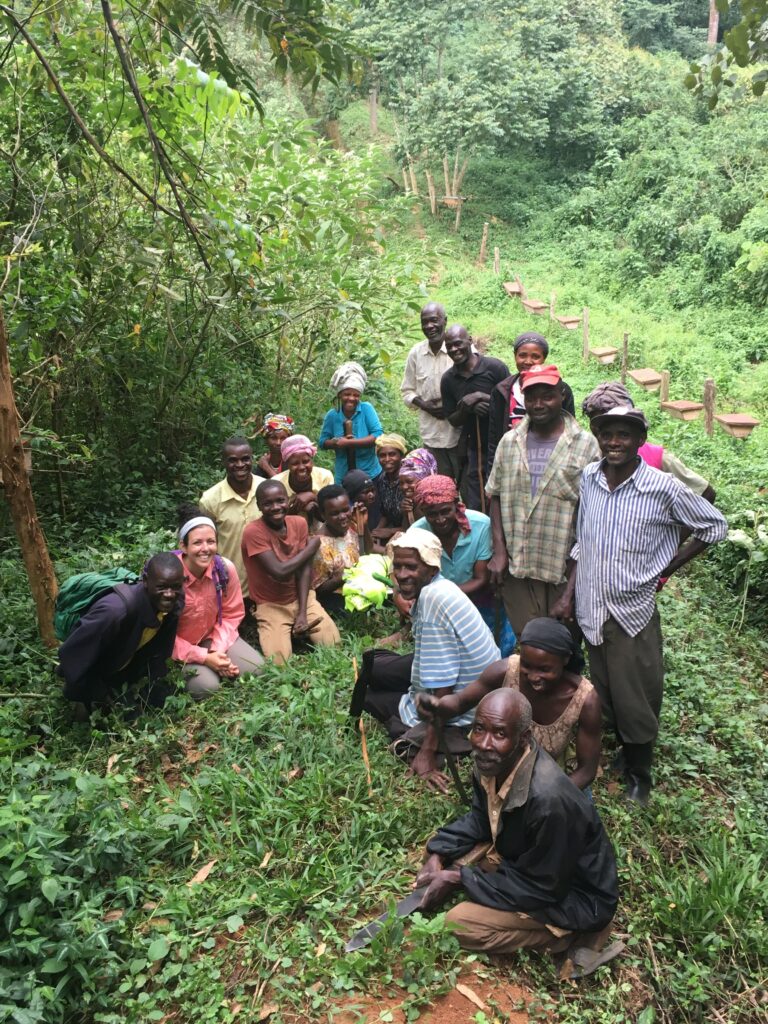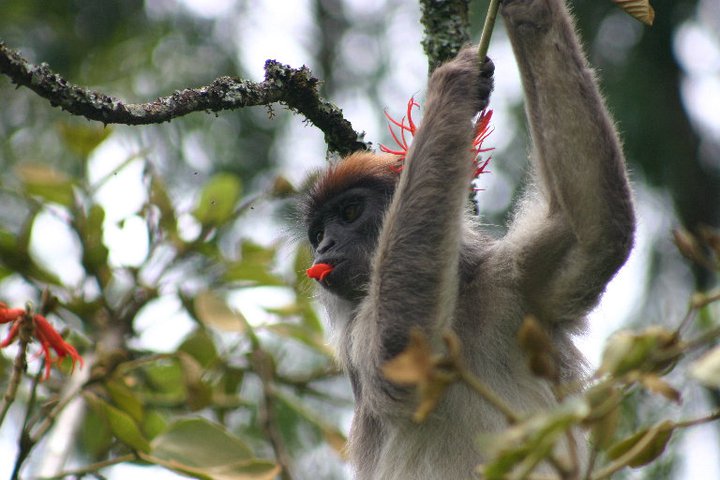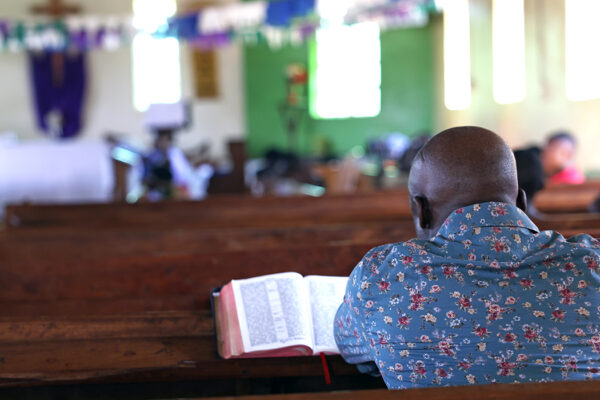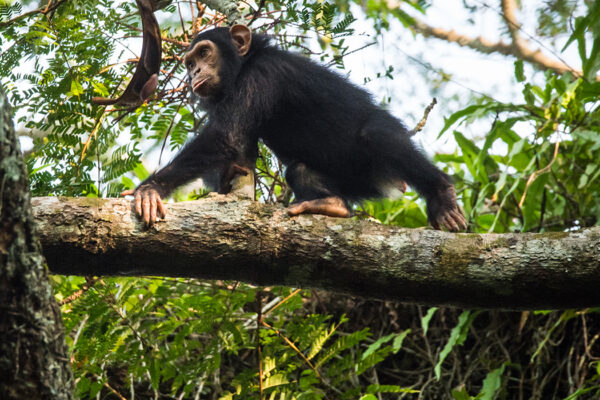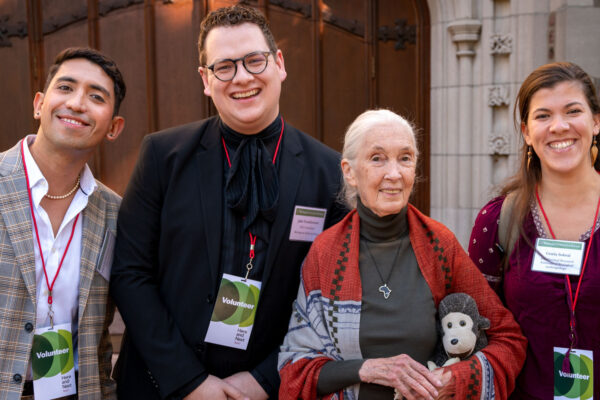It was the middle of the night when anthropologist Krista Milich arrived at Entebbe International Airport in Uganda. The sky was dark, and she could see little of her surroundings as she stepped out of the plane onto the tarmac. But Milich still remembers her first gulp of the moist, tropical air. It felt different. It was different.
Now an assistant professor of biological anthropology in Arts & Sciences, Milich has lived and worked in Uganda extensively since 2007. But at the time, she was still a graduate student. She had spent years preparing for her first trip to Africa. After that night flight and seven more hours by car, much of it on bumpy dirt roads, Milich caught a glimpse of a group of baboons at the edge of the forest. She had finally reached Kibale National Park.
“It’s this beautiful forest, and there were literally monkeys there to greet us,” Milich recalls.
The baboons, as it turned out, were a more or less constant presence. The small, arboreal monkeys that Milich planned to study — red colobus monkeys — are endangered, and they were harder to track down. Thankfully, Milich had lined up local research assistants to help.
All of Milich’s team members lived in communities along the edge of the park. Thanks to their knowledge of local tree species, the group successfully documented red colobus monkeys’ food sources in forests experiencing heavy, partial, or no logging. All in all, Milich was able to collect data on six groups of monkeys for more than a year. Her research assistants provided critical experience at every stage.
“They were incredible,” Milich says. “They became partners on the project.”
As she finished up writing her dissertation, Milich got an unusual request. A few of the people who had worked with her on the red colobus project asked if she could help with an elephant problem.
Wild elephants and baboons, it seems, had become increasingly brazen about raiding the home gardens of the people who lived in the communities neighboring Kibale National Park. The animals were leaving the park at night to eat the yams, cassava, starchy bananas, millet and other staple foods. The situation had gotten so bad that some people were sleeping outside in their gardens to protect their crops.
“Two of my former research assistants — including one who is now working with the red colobus again — asked me about doing some sort of community project to stop animals from leaving the park and eating people’s crops,” Milich says. “I agreed to partner with them on this project.”
Milich saw that she could help with grant proposal writing and with budgeting and reports. But it was important that the actual work of the project be entirely community-led. Researchers from around the world, like Milich herself, lead projects at Kibale National Park. With this effort, she wanted to play a supporting role.
“These incredibly intelligent, talented people work on these research projects,” Milich continues, “but they rarely have the opportunity to then create and run their own projects. They don’t have the opportunity to advance to being their own project managers.”
Milich helped Busobozi Richard and Kugonza Moses of Uganda set up the effort as a participatory action research project, meaning that participants in the communities — the ones who were concerned about the human-wildlife interactions — do the work. They called the project Conservation to Coexist, which is now organized under a parent nonprofit, Conservation Together.
The director of the local biological field station, David Tumusiime, who works for Makerere University in Uganda (a McDonnell International Scholars Academy partner), has also become involved with the effort as a collaborator, helping with training and outreach, as have rangers with the Ugandan Wildlife Authority.
Richard and Moses started by conducting surveys that asked people very open-ended questions related to the forest and wildlife. Respondents were unequivocal: They wanted something done about crop raiding, and they were willing to participate in activities to reduce it.
So Richard and Moses proposed some mitigation strategies that community members could help implement.
These strategies included maintaining trenches that the Ugandan Wildlife Authority had put into place to stop elephants from crossing into more populated areas, as well as stringing up beehives on wire fences to discourage elephants from entering areas where trenches were not viable. (Turns out elephants don’t like the sound of bees buzzing.)

“The trenches had been established, but we encouraged the community members to participate in maintaining the trenches. We also gave them support,” says Akugisibwe Ronald, a project assistant at Conservation to Coexist. “We gave them tools.”
The team wanted to make sure that these mitigations did not prevent community members from growing any of the foods that they were already growing. And so far, it’s mostly working.
There have been a lot fewer elephant visitors. People now feel as if they can handle the occasional annoyance of the baboons and other primates crossing over from the park. Gardens are thriving.
“Now people can sell their crops,” Ronald says. “They have food. They even have excess food that they can store for the next season.”
“I’m thinking specifically of a woman who has done an incredible job with her garden and also her garlic patch since we started the project,” Milich says. “She’s a mom with several kids. And she’s always very proud about showing me her latest garlic crop or how well her gardens are growing.
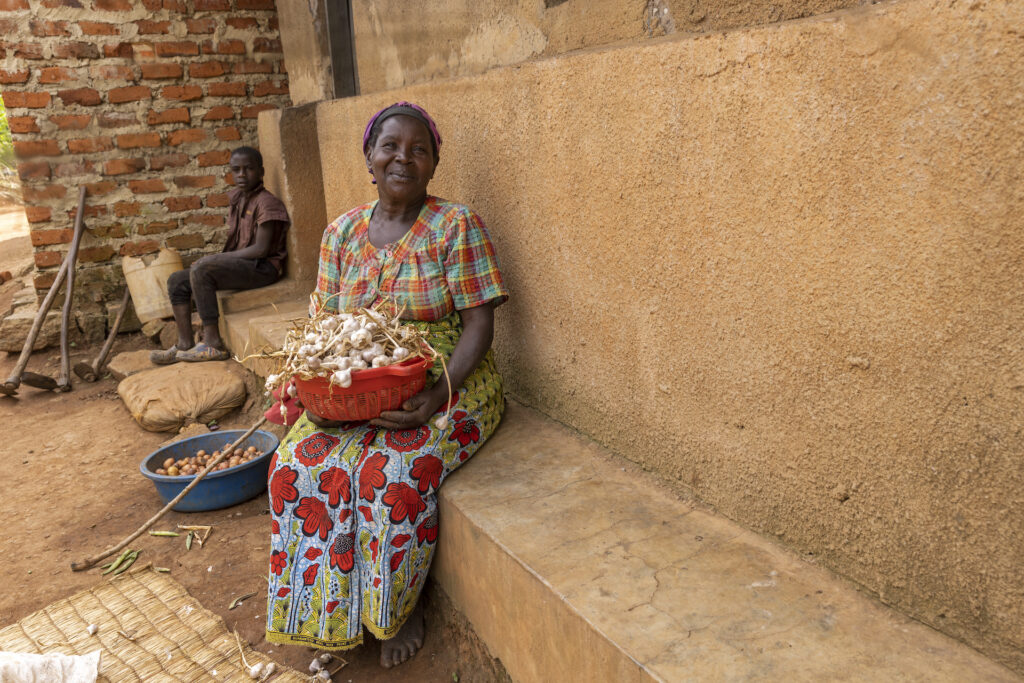
“She had maize, but in previous years, she had never been able to sell any of it because the animals would always eat it,” Milich says. “Once we made it so that the animals weren’t able to come onto her land, she’s sold maize to the point that she was able to put a roof on her house, which is exciting.”
Others are selling honey from the beehives.
Milich is optimistic that wins like this for people in the community might translate into additional opportunities for red colobus monkeys in nearby forests to regain the toehold they need for survival. They are now considered the most threatened group of African monkeys, with 13 of the 17 red colobus species (>75%) listed as Critically Endangered or Endangered, and all of them threatened with extinction.
“I’m hopeful because I think there are a lot of people who are committed to protecting red colobus monkeys,” Milich says. As part of the effort, Milich and her students regularly return to Uganda to observe changes in the monkeys’ diet or reproduction. But she’s also realistic about the challenges the monkeys face from habitat loss and hunting.
The future is perhaps more universally bright for the participatory action project that Milich helped start. In the throes of the ongoing pandemic, Milich — who organized and taught a phenomenally popular course about COVID at WashU during fall 2020 — was able to leverage relationships with community members through Conservation to Coexist to get 700 people in communities near Kibale National Park vaccinated against the virus.
That had nothing to do with deterring elephants, but it just made sense.
“Slowly by slowly — mpora mpora, as they would say in Uganda,” she laughs. “People are going out every week and doing this hard work … It’s really encouraging. It makes you realize that if we work together, there’s nothing that can stop us from achieving what we want.”
